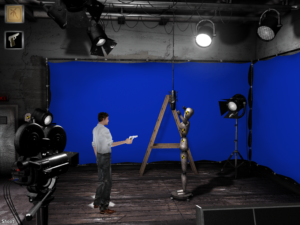The Final Cut: Initial Confusion
By now, I’ve voluntarily restarted The Final Cut several times. I’ve done this because the earlier bits don’t provide nearly enough context to understand what’s going on. You’re a detective, that much is clear. You’ve been hired to conduct an investigation. But no one tells you what you’re supposed to be investigating. The would-be filmmaker has left you a welcome-and-introduction videotape, but it fails to mention what he wants you to do, or even what his name is. The woman who hired you on his behalf goes to bed immediately after driving you to the mansion, and is mute besides, so there’s no getting information out of her. Snooping around the empty house yields a certain amount of data about various people, but at that point you still have no idea who these people are or what their relation is to the investigation; one of them may be the mute woman, but you haven’t learned her name yet at that point either. When you finally encounter a human being you can talk to, you can work out what the mystery is you’re supposed to solve: the cast and crew all mysteriously failed to show up one day. But the conversation only makes sense if the PC already knows this.
It’s as if I’m missing something I was supposed to learn all this from, possibly a manual. The only documentation I have is a jewel-case insert that explains the UI and not much else. I suppose I should search my pile of loose game manuals for something more substantial, but I remember being equally confused the first time I played the game, so I don’t think any such thing was included in the box. Maybe I’m the victim of a packaging error, or maybe the publisher decided to do without it in the American release. Still, relying on docs to deliver the premise is a mistake that few modern games would make.
The really galling thing is that the intro movie, which would be the perfect place to introduce the basics of the case, tells us next to nothing. The player character narrates how he got involved in this job, and does it in elliptic private-eye patois that evokes any number of films not by Hitchcock, but that’s all.
But then again, the lack of clarity doesn’t stop at the premise. While exploring a diner set, I was baffled by the PC suddenly writing “Sound Engineer: Fat guy” in the PDA he uses as a notebook. Only after restarting and playing the scene again did I notice that he had first glanced at one of the counter stools (there’s those subtle head movements again!), the seat of which was crushed. So, that explains the “Fat guy” part, but why did he think the sound engineer had been sitting there? Is this a manifestation of his psychic powers? Probably not; I’ve seen how his psychic powers work by now. He’s gifted with psychometry, or possibly cinemetry. When he touches objects, he sometimes gets a vision of a two-second clip from a Hitchcock film. (So there is a fair amount of FMV after all.)
Any confusion the player feels in the early parts of the game is exacerbated by the disorienting way that the camera cuts from position to position without warning as you explore the grounds. I recall getting lost and unable to find my way back to the mansion in my first session, years ago. By dint of repetition, I’ve got a better handle on the layout now — the main part is basically just two parallel roads with the mansion at one end and a large backdrop at the other, with various sets between them. It would be pretty much impossible to get lost if you could look around freely.
Fortunately, I seem to be pretty much past the initial confusion phase and into the phase of solving deliberate puzzles. This phase starts when you start finding bodies. There’s nothing like a corpse to give a detective concrete goals.
 Comments(0)
Comments(0)